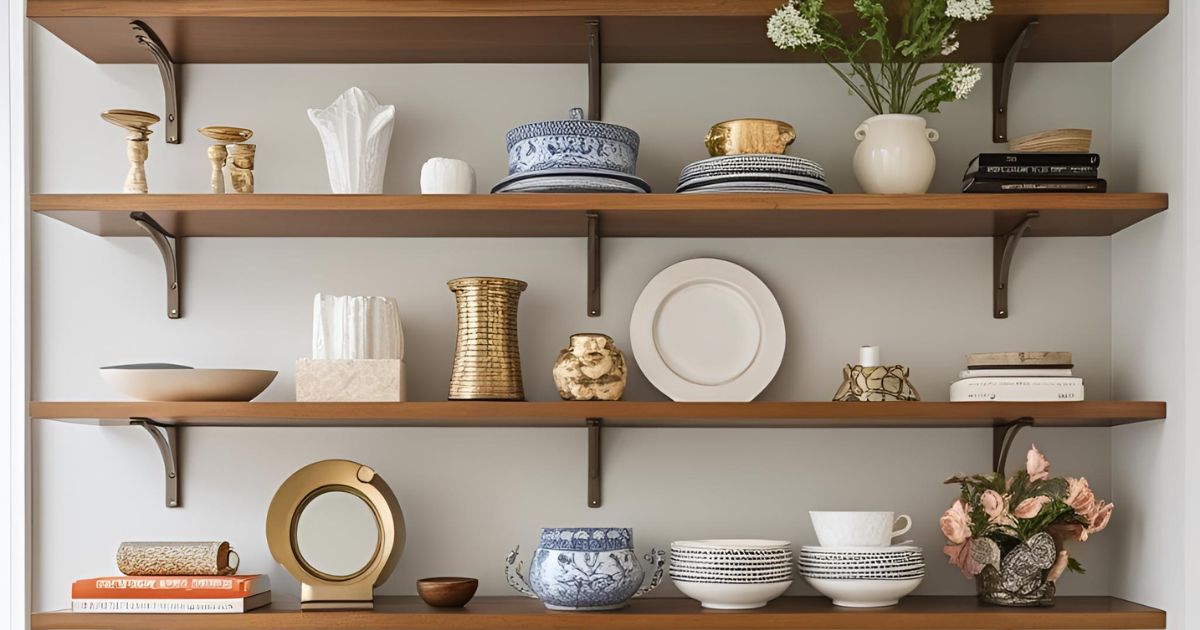Open shelving can be both a blessing and a design challenge. Done right, it adds personality, dimension, and function to your space. But without the right balance, open shelves can quickly look cluttered or sparse. Whether you’re styling kitchen shelves, a bookcase in your living room, or floating shelves in the bathroom, these tips will help you style them like a professional interior designer.
1. Start with a Clean Slate
Before adding anything, remove all items from the shelves. This gives you a fresh visual field to work with and allows you to approach the arrangement with intention. Wipe down the surfaces and consider the background color or wall texture—these play a role in your overall look.
2. Choose a Color Palette
To keep your shelves looking cohesive, stick to a limited color scheme. Use two to three main colors and build around them with neutral tones like white, black, or natural wood.
Pro Tip:
Repeat key colors throughout the shelf in varying objects (books, vases, ceramics) to create visual flow.
3. Mix Heights and Shapes
Variation is essential for visual interest. Combine tall and short items, wide and narrow pieces, hard and soft textures. For example, place a tall vase next to a stack of horizontal books or pair a round bowl with a framed photo.
Try mixing:
- Books
- Plants
- Decorative boxes
- Sculptures or figurines
- Candles
- Bowls or trays
4. Layer and Stack
Depth is key in shelf styling. Don’t just place everything in a row—layer items in front of one another to create dimension. Stack books horizontally to use as platforms for smaller objects, or place a photo frame slightly in front of a larger piece of art for layered interest.
5. Use the Rule of Thirds or Odd Numbers
Designers often style in odd numbers—especially threes. Grouping items in threes (small, medium, large) tends to look more natural and pleasing to the eye than even-numbered groupings.
For example:
- A plant + a candle + a framed photo = a balanced trio
6. Add Something Organic
Plants or natural elements like driftwood, woven baskets, or stone pieces bring warmth and life to shelves. Even a small touch of greenery can soften the overall look and make the space feel more inviting.
7. Leave Breathing Room
It’s tempting to fill every inch of shelf space, but restraint is crucial. Leave some open space—your eye needs a place to rest. Negative space makes the items you do display feel more intentional and elevated.
8. Incorporate Personal Touches
While aesthetics matter, shelves should reflect who you are. Include meaningful items like travel souvenirs, family photos, or cherished heirlooms. These add authenticity and make your display uniquely yours.
9. Rotate Seasonally or Occasionally
Refreshing your shelves every few months can keep your space feeling new and inspired. Swap out seasonal items, change color accents, or rotate art pieces to reflect your current mood or style.
Final Thoughts
Styling open shelves is a blend of creativity, curation, and balance. By thoughtfully arranging a mix of textures, colors, and heights—and adding your personal touch—you can turn ordinary shelving into a statement of style and personality.
Whether you’re curating a modern minimalist shelf or a cozy eclectic display, these pro tips will help you design shelves that are as beautiful as they are functional.

